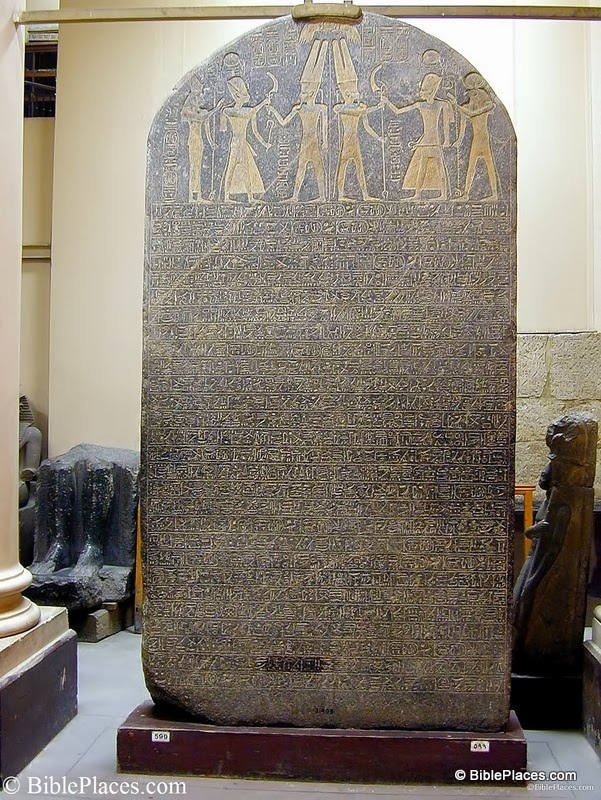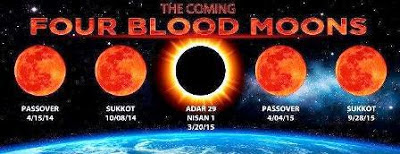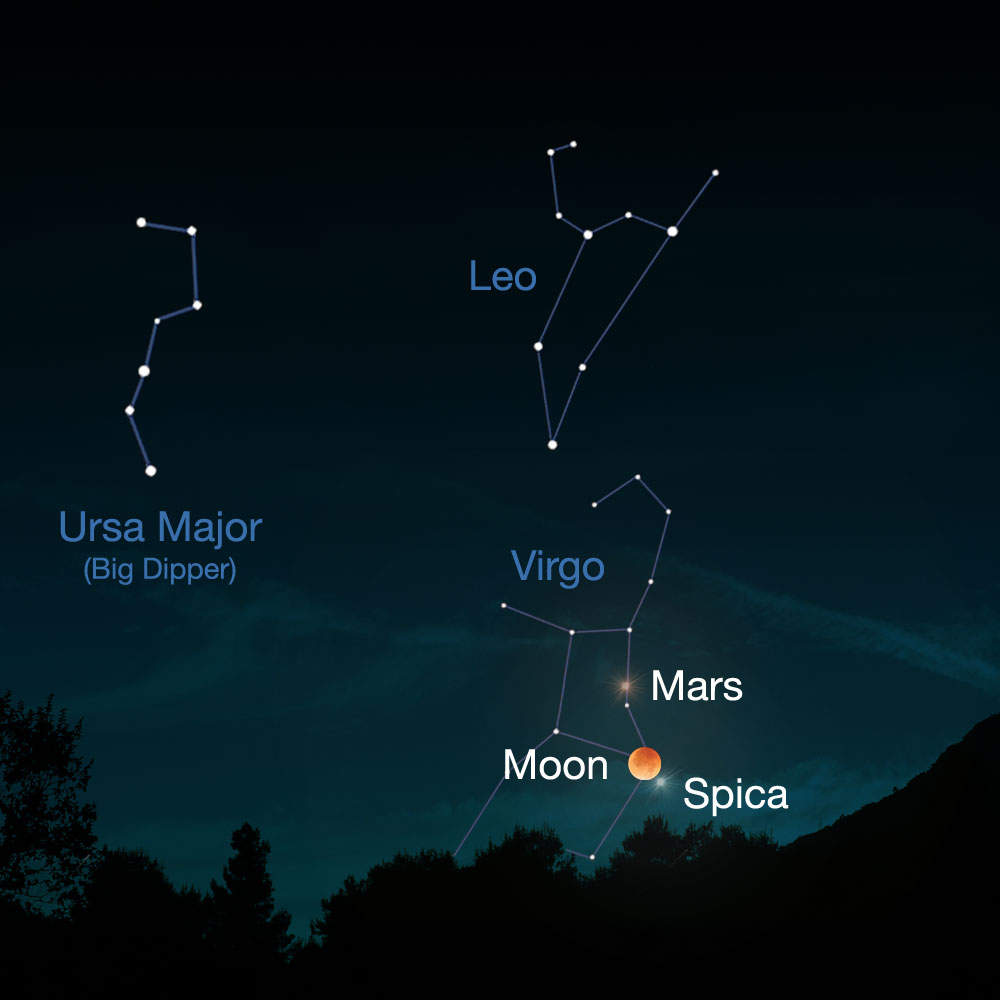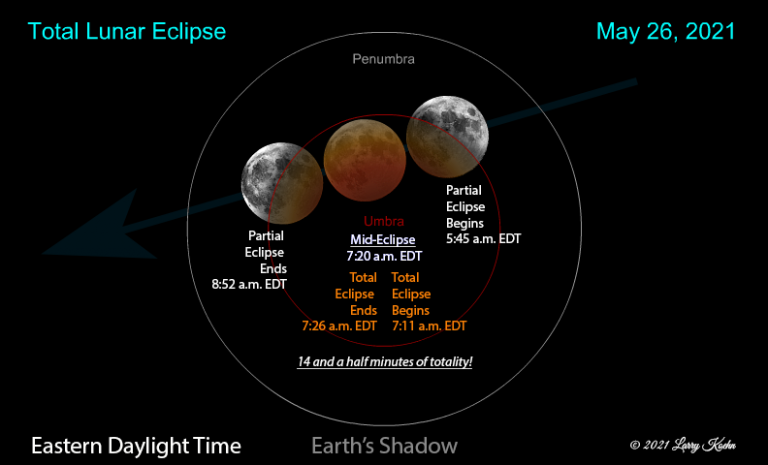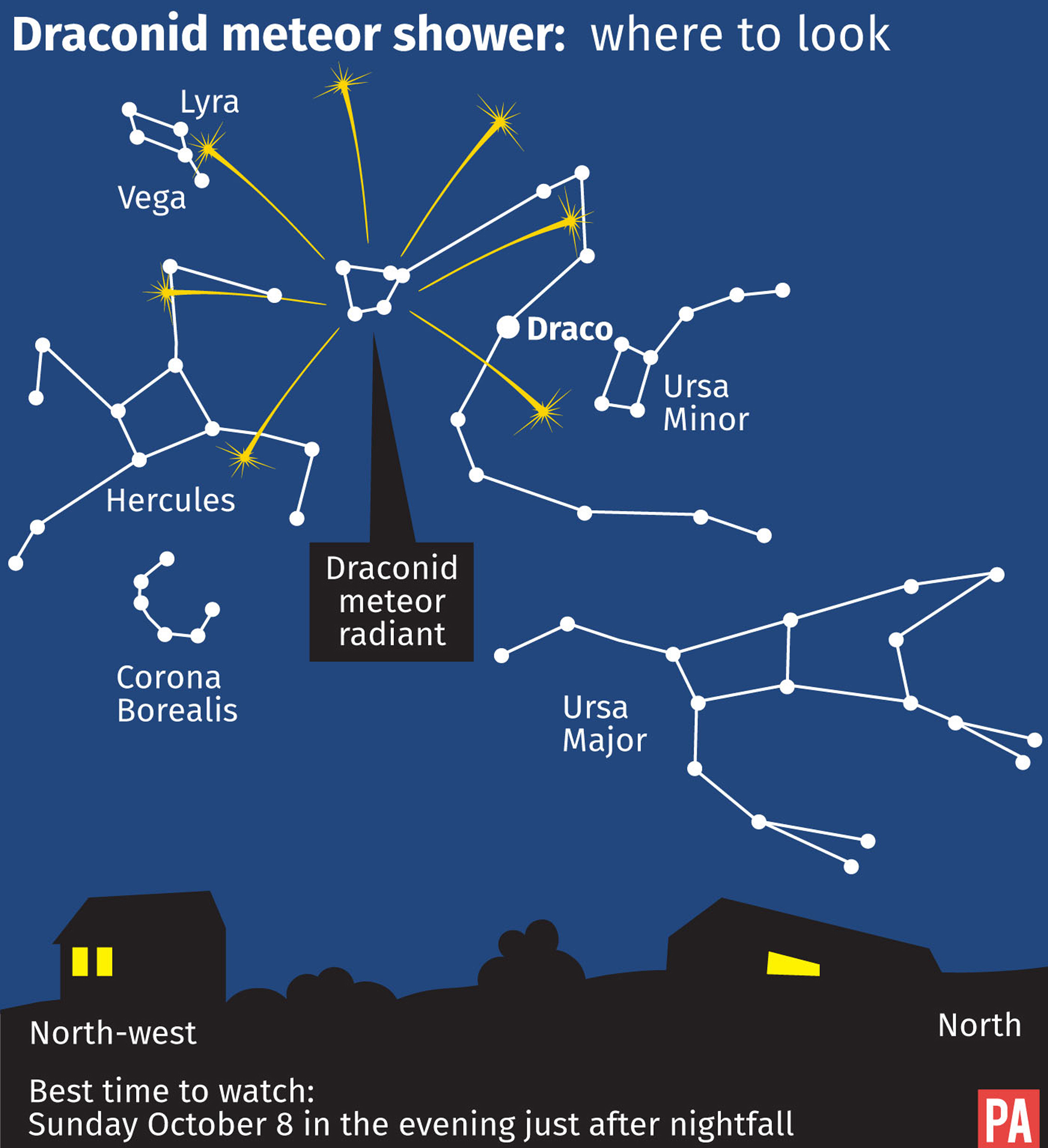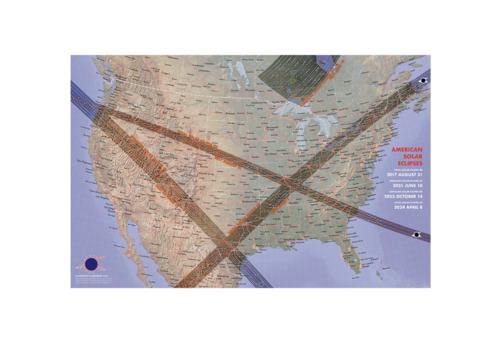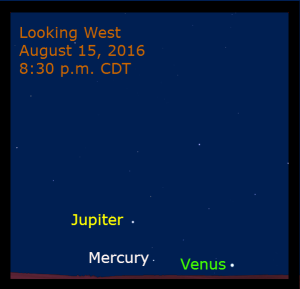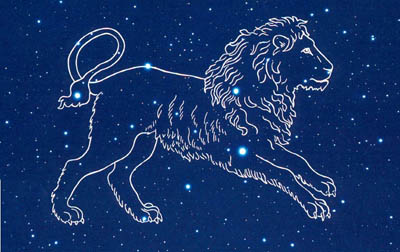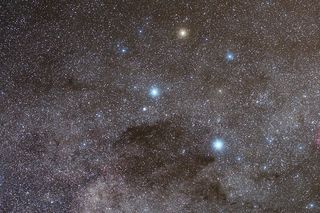
The Biblical Astronomy of the Miracle of Joshua’s Long Day
In Jon Nessle’s current OT History class, we have learned of key errors linked to the dating of the conventional chronologies, of history, and the assumptions that accompany their popularized time placement, that have caused no end of confusion for archaeology, Bible historians, and students. We will see how Courville’s redating of Bible History has provided much-needed answers to the numerous problems linked to the conventional chronology. We will also note some modern historians and Bible Archaeologists that not only agree with Courville’s redating, but provided key evidences in support of it. The following quotes from Courville provide the context of this position along with the benefits that come with their acceptance. This provides an important backdrop for the subject of this month’s blog, an astronomical event known as Joshua’s Long Day. The focus of this study is an alternative timeline to the conventional chronology, along with some existing and newer research connected to Joshua’s Long Day. The first reference from Courville addresses certain cultural innovations that the Hebrews brought in their invasion and conquest of Palestine, led by Joshua.
“The pottery of the period is exceptionally fine… At Megiddo there is a complicated succession of building periods …. Early in the sequence comes a very fine town wall… and is a most impressive example of the town walls of this period. This phase can be taken as representative of the fully developed culture of Canaanite [sic] Palestine, a culture of prosperous city-states. Against the background of the revised chronology, the ancient Hebrews were far from being a cipher culturally. It was the Hebrews who introduced the use of bronze into Palestine; it was the Hebrews who introduced the use of the fast wheel in making pottery; it was the Hebrews who introduced the high level of culture to be observed in Palestine at the beginning of Middle Bronze and which was never exceeded; it was the Hebrews who introduced the use of drainage systems and the use of cisterns as a means of preserving water from the rainy season; it was the Hebrews who introduced improvements in the architecture of dwellings and defense walls; it was very probably the Hebrews who introduced the technique for obtaining iron from its ores in quantity. These and other contributions to the culture of Middle Bronze Age in Palestine should be credited to the Hebrews and not to their pagan
contemporaries, the Canaanites or the Amorites. However, all this is true only if it is possible to erect a satisfactory chronological structure of the ancient world on the foundations laid by a redating of the end of Early Bronze to c. 1400 B.C., some 600 years later than dates currently attributed to this change of culture. This is an exceedingly large IF. While it has already been shown that a number of large problems in archaeology are provided solutions by this alteration, this is only a start. It must also be shown that every significant synchronism which has been used to support the conventional structure is either ill-founded or else, that it continues to hold for
the revised structure; it must be shown that the almost infinite bits of information gleaned archaeologically can be rationally interpreted against this revised background; it must be shown that all of the chronologies of other ancient nations can be revised as necessary to fit into this revised scheme; it must be shown that the various methods of dating that have been used in arriving at the presently accepted structure are not valid, including the so-called astronomical dating methods.”
“And finally, it must be explained why most scholars in the field for the last half-century and more have fallen into the same errors of fallacious reasoning without being able to recognize the nature of their mistakes which have led them to the currently accepted views. Not only is this possible, it can be done with the continued elimination of numerous added difficulties characterizing the conventional structure and with the appearance of a number of noteworthy synchronisms that have not been previously recognized. The writer does not ask the reader to accept these claims per se. He only asks that the reader follow carefully and critically the developments outlined in the subsequent chapters of this work, evaluating for them the evidence which are presented in support of a revised chronology of Egypt which agrees with Bible chronology and with Bible history without an appreciable flaw.” [HEBREW CULTURE p. 113-114 THE EXODUS PROBLEM] 1
At this point, we are content to note that the same shift in dating at the end of Early Bronze which provides solutions to anomalies at Jericho, and at Ai, as well as providing a ready solution to the enigmas of Hittite chronology, also provides the proper setting for the events of the Exodus, the Conquest of Joshua, and the era of the Judges. A major issue with the Conventional Chronology where the history of ancient Egypt is concerned, is the lack of precise evidence to delineate epochal divisions between Stone, Bronze & Iron ages, to mark the transitions between these epochs. Courville is one of the very few who has aligned the layers of the archaeological digs starting in Jericho, as documented by Kenyon, from the end of the Jews 40-year wilderness wandering after the Exodus, with Joshua’s conquest and displacement of the Canaanites, Amorites, et al. in Palestine.
On the basis of the multiplicity of synchronisms indicating that the Conquest should properly be set at the end of Earlv Bronze IV, it was concluded that the Exodus occurred at the point of the fall of the Old Kingdom, approximately marked by the end of Dynasty VI. This point is marked by a similar eclipse of power in Egypt which lasted for a pluralitv of centuries. [3] On the basis of the demands of the redating of the end of Early Bronze, it was necessary to recognize both these periods as one and the same. 2
The identification of the line of Pharaoh’s just before the Hyksos kings, puts us in the proper position to reveal the pharaoh of the Oppression, which provides confirmation of this general structure. Thus, it will be possible also to show clearly the identity of the Pharaoh of the Oppression who carried out an extensive building program in brick in the eastern Delta region where the Israelites lived. A famine inscription appears, dated almost exactly at the point required by Old Testament Chronology relative to the Exodus, dated c. 1445 B.C., with a multiple of confirming evidences for the proposed setting of the Exodus. This scenario put forward by Courville in THE EXODUS PROBLEM, is the setting of my Nov. 2022 blog, that handles details of Joshua’s Conquest, to agree with the Scriptural and historical account of events as seen in Joshua 10. 3
Joshua 10:1-6
1 Now it came to pass when Adoni-Zedek king of Jerusalem heard how Joshua had taken Ai and had utterly destroyed it—as he had done to Jericho and its king, so he had done to Ai and its king—and how the inhabitants of Gibeon had made peace with Israel and were among them, 2 that they feared greatly, because Gibeon was a great city, like one of the royal cities, and because it was greater than Ai, and all its men were mighty. 3 Therefore Adoni-Zedek king of Jerusalem sent to Hoham king of Hebron, Piram king of Jarmuth, Japhia king of Lachish, and Debir king of Eglon, saying, 4 “Come up to me and help me, that we may attack Gibeon, for it has made peace with Joshua and with the children of Israel.” 5 Therefore the five kings of the Amorites, the king of Jerusalem, the king of Hebron, the king of Jarmuth, the king of Lachish, and the king of Eglon, gathered together and went up, they and all their armies, and camped before Gibeon and made war against it. 6 And the men of Gibeon sent to Joshua at the camp at Gilgal, saying, “Do not forsake your servants; come up to us quickly, save us and help us, for all the kings of the Amorites who dwell in the mountains have gathered together against us.”
This Biblical record begins in verse 1 by recounting how “Joshua had taken Ai and had utterly destroyed it—as he had done to Jericho and its king, so he had done to Ai and its king—and
how the inhabitants of Gibeon had made peace with Israel and were among them.” This is in general agreement with Courville’s redating of the conventional chronology, to a time when Joshua was conquering the cities of Jericho, and Ai, as we find in the following reference from Courville.
XII. “Other Peoples Migrated out of Palestine at the End of Early Bronze age, in line with Scripture, as it was not alone the Hittites who were to be displaced by the incoming Israelites. If the proposed redating of the Conquest is correct, then there should be evidence of the settlement of other peoples in areas outside Palestine that previously had resided within this territory. The Phoenicians who settled along the northern coast of the Mediterranean refer to themselves as the Canaanites, [60] people also displaced from Palestine by the Israelites. The Mitannians appear to be a remnant of one branch of the Hurrians who similarly dwelt in Palestine previously. [61] The Amorites were in the Palestine area from the time of Abraham. They were displaced at the time of the Conquest, and appear in the area north of Palestine as the Amurru, a name associated with the Amorites. [62]
A consistent picture results from the recognition that Early Bronze represents the era just prior to the conquest of Joshua and the following transition period is that of the Conquest itself.” [p. 98 THE EXODUS PROBLEM.] 4
As this Biblical record agrees with Courville’s redating of Joshua’s Conquest at the End of Early Bronze age, confirmed by the displacement of the men of Jericho, Ai, and the Amorites, many other thorny historical problems associated with the Conventional Chronology find solutions also.
Joshua 10:7-11 7 So Joshua ascended from Gilgal, he and all the people of war with him, and all the mighty men of valor. 8 And the Lord said to Joshua, “Do not fear them, for I have delivered them into your hand; not a man of them shall stand before you.” 9 Joshua therefore came upon them suddenly, having marched all night from Gilgal. 10 So the Lord routed them before Israel, killed them with a great slaughter at Gibeon, chased them along the road that goes to Beth Horon,
and struck them down as far as Azekeh and Makkedah. 11 And it happened, as they fled before Israel and were on the descent of Beth Horon, that the Lord cast down large hail-stones from heaven on them as far as Azekah, and they died. There were more who died from the hailstones than the children of Israel killed with the sword.
This was a singular battle in world military history because as verse 11 above recounts; it was the Lord who cast down large hailstones from heaven on the fleeing Amorites. The Lord of Hosts was fighting from Heaven for Israel against their enemies in Palestine, and the large hail-stones God sent raining down in a meteor shower on them, killed more of the enemy than the Israelites themselves. This harmonizes with Josh. 10:8 above, which says “I [God] have delivered them into your hand,” but this miracle, that recalls the signs from heaven akin to the destruction of Sodom and Gommorah, [Gen. 18:17-32] to a lesser degree, was only an astronomical foretaste of what was in store for these enemies of God’s people.
Joshua 10:12-15 12 Then Joshua spoke to the Lord in the day when the Lord delivered up the Amorites before the children of Israel, and he said in the sight of Israel: “Sun, stand still over Gibeon; And Moon, in the Valley of Aijalon.” 13 So the sun stood still, And the moon stopped, Till the people had revenge upon their enemies. Is this not written in the Book of Jasher? So the sun stood still in the midst of heaven, and did not hasten to go down for about a whole day. 14 And there has been no day like that, before it or after it, that the Lord heeded the voice of a man; for the Lord fought for Israel. 15 Then Joshua returned, and all Israel with him, to the camp at Gilgal.
The locations of Gibeon, Beth Horon and the Valley of Aijalon, Azekah and Makkedah as Joshua pursued the Amorites, are shown in figure 1. 5

This Map of ancient Canaan shows the route taken by the Israelites, starting at Gilgal, then to the great slaughter @ Gibeon, to pursue them unto Beth Horon, where the large hail-stones started falling, then Aijalon over which the Moon stood, [Josh. 10:12], then unto Azekah and Makkedah according to Joshua 10:9–11. The book of Joshua continues in the Old Testament, after an all-night march from Gilgal, the Israelites attacked the Amorites at Gibeon, and then pursued them to Azekah and then to Makkedah (fig. 1). As evidence from historical geography shows the locations of these sites: Gibeon was about 10 km northwest of Jerusalem, Azekah about 30 km southwest of Gibeon, and Makkedah about 20 km south of Azekah. 6
Prior research into this topic by Humphreys and Waddington aids the conventional chronology of astronomy, with related data in the fields of Egyptology and Hebrew studies. So how did these two physicists proceed in their research regarding an event that’s only obliquely referred to in an ancient Bible text? Their multidisciplinary task according to them, required a foray into ancient Hebrew, a rethinking of Egypt’s royal history, and some complex calculations about the Earth’s rotation. Their inquiry began with the translation of the Hebrew word “dôm,” from Joshua 10. In English versions of the Bible, it’s usually translated as “stopped,” as in the sun “stopped moving.” When discussing the word with Alan Millard, a professor of Hebrew and ancient Semitic languages, Humphreys pondered whether it could actually mean the sun “stopped shining”—that may suggest an eclipse. In order to date the eclipse, the Cambridge researchers included a new “eclipse code” which examined variations in the Earth’s rotation over time. 7
Earlier researchers also only looked at total eclipses, failing to consider that the text may refer to an annular eclipse, in which the moon passes directly in front of the sun, but is too far away to cover the disc completely, they said. From their calculations, the Cambridge researchers found that the only annular eclipse visible from Canaan between 1500 and 1050 BC was on Oct. 30, 1207 BC, in the afternoon.
Historical evidence from the Merneptah Stele, a text from the reign of the Pharaoh Merneptah, shows that the Israelites were in Canaan between 1500 and 1050 BC. This large granite block held in the Egyptian Museum in Cairo says that it was carved in the 5th year of Merneptah’s reign and mentions a campaign in Canaan in which he defeated the people of Israel. If correct, it enables academics to date the reigns of Ramesses the Great and his son Merneptah, to within a year.
Figure 2. The Merneptah Stele. 8
The Merneptah Stele (ca. 1208 BC) is a 10-foot tall, granite victory monument, which names Israel as a nation in Canaan.
The most famous, and arguably the most important discovery related to Moses and the Exodus is the Merneptah Stele. In ca. 1208 B.C. Pharaoh Merneptah erected a 10-foot tall victory monument (called a stele) in a temple at Thebes to boast of his claims of victory in both Libya and Canaan. It was discovered in 1896 by Sir Flinders Petrie. On it, Merneptah boasts, “Israel is wasted, its seed is not; And Hurru (Canaan) is become a widow because of Egypt.”9
Most scholars agree that this is the oldest definitive reference to Israel as a nation outside of the Bible, and certainly the clearest Egyptian reference to Israel. It is also important because it points towards an early date for the Exodus (ca. 1446 B.C. agreeing with Courville) and not the late date that some scholars hold to (ca. 1270 B.C.). It is doubtful that there would be enough time from 1270 B.C. to 1208 B.C. to account for the Exodus, the 40 years of wandering in the desert, the seven-year conquest of Canaan, the settlement of the tribes in their territories, and the establishment of a national presence in the land, all before Merneptah claims to have conquered them. Merneptah’s Canaanite campaign instead likely dates to the time of the Judges, when the nation of Israel was already settled in Canaan. The Merneptah Stele is evidence that the Exodus from Egypt, led by Moses, took place in the 15th century BC, as the biblical data indicates. 10
The later dates from mainstream Egyptologists for the reign of Ramesses II are c. 1279–1213 BC, with his son Merneptah reigning from c. 1213–1203 BC (Shaw 2003, Horning et al. 2006, Kitchen 2013). These dates are subject to some uncertainty, with the latest possible dates for Ramesses II being 1270–1204 BC, and for Merneptah 1204–1194 BC (Kitchen 2013). Some other researchers, most notably Rohl (1995), have proposed an alternative chronology for ancient Egypt in which these dates are advanced by several hundred years. Their “New Chronology” has achieved widespread publicity alongside widespread criticism from mainstream Egyptologists. In this “New Chronology,” the 5th year of Merneptah is 867 BC. 11
Changes to Egyptian history that Humphreys suggests pertain to the ruling period of each pharaoh, including Merneptah, during whose reign the Merneptah Stele was carved. Merneptah was the son of Rameses the Great, one of Egypt’s most famous pharaohs, and there’s been considerable debate over the years about when Rameses was in power. With the combination of a date from the solar eclipse, and the carving of the Stele, Humphreys and Waddington have proposed years for the pharaohs’ reigns that narrow their reigns down to plus or minus one year. They argue Rameses the Great ruled from 1276 to 1210 BC, while Merneptah was in power from 1210 to 1200 BC.
Prof. Humphreys added: “Solar eclipses are often used as a fixed point to date events in the ancient world. Eclipses have also shaped human events, says Duncan Steel, author of Eclipse: The Celestial Phenomenon That Changed the Course of History. “Historically, they have been pivotal in deciding battles,” including the 585 BC eclipse that stopped a battle between the Medes and the Lydians. The Greek philosopher Thales had predicted the eclipse, and when darkness did fall, the warring sides viewed it as an omen and hurried to come to a peaceful agreement. 12
The Bible puts the Israelites in Canaan from the beginning of the Conquest through the destruction of the Temple in about 586-5 BC, so this gives a span of many centuries for a potential conflict between Egypt and Israel. Why choose the first year of that span as the date, when Merneptah’s reference on the stele must have occurred? A primary reason to link Merneptah’s stele with Israel’s conquest of Canaan seems to be first based on tradition, that the Exodus occurred during the reign of Ramesses II. Second, that the Merneptah Stele is the consensus among Egyptologists and historians as the oldest reference to Israel in the history of ancient Egypt, providing an anchor point for their thesis, with this eclipse linked to it. Thus the conclusions of their research are grounded, assuming the conquest happened congruently with Merneptah, as proof that Merneptah reigned during the time of the conquest in 1207 BC, near the possible Joshua eclipse date of the same year. Also if the idea of an exclusive annular eclipse is correct, as the only eclipse candidate to suffice in the situation, eliminating the possibility of other partial eclipses, it would seemingly strengthen their position.
Previous claims of the earliest recorded eclipse include images carved into stone cairns at Loughcrew in Co Meath, Ireland, over 5,000 years ago, while Greek astronomer Ptolemy claimed that the first recorded eclipse was observed by the Babylonians in March 721 BC. The results are published in the Royal Astronomical Society Journal of Astronomy & Geophysics. 13
Were Humphrey’s & Waddington the first to propose an eclipse interpretation for Joshua’s Long Day? In fact, another linguist named Robert Wilson came to the same conclusion of an eclipse interpretation of Joshua 10, nearly 100 years earlier. And while previous scientists had attempted to find solar eclipses for that period and failed, they’d never thought to look for an annular eclipse, which occurs when the moon only partially covers the sun, leaving a ring of light visible at the edges. “That convinced me that ‘eclipse’ was the right translation,” Humphreys says.
Humphreys looked to the giant stone inscription on the Merneptah Stele, as corroboration that the Israelites really were in Canaan during the time of a supposed eclipse. He referenced the Egyptian text believed to be the earliest textual reference to Israel, specifically its final few lines of hieroglyphics that refer to a battle with the Israelites in Canaan, correlated to the Old Testament.
As the first person to suggest that Joshua 10:12–14 was referring to a solar eclipse, the linguist Robert Wilson (1918), who over 100 years ago gave the following translation:
Be eclipsed, O sun, in Gibeon, And the moon in the valley of Aijalon! And the sun was eclipsed and the moon turned back, while the nation was avenged on its enemies.
Wilson claimed that in Babylonian cuneiform texts there are words with the same root as the Hebrew dôm that are used in Babylonian astronomical tablets in connection with eclipses, meaning “to be dark”. However, at that time, 100 years ago, it was not deemed possible to investigate this further because of the laborious nature of the calculations required. 15 (Russell 1918).
As we check the Hebrew words used in Joshua 10:12–13, from the same Hebrew root as dôm, they generally agree with the Babylonian meaning “to be dark.” The related Hebrew words included from Strong’s Concordance [H1820, H1826 and H1724]. H1820– “damah= to cease, rest, silenced, be quiet, make an end, destroyed, laid waste, desolate, cut off, to perish.” The Hebrew verb refers to violent ends, seen in Isa. 15:1, Jer. 14:17, Hos. 4:5–6. All 3 of these references include the word “night“ [H3915] with the darkness linked to it, as in Gen. 1:5 where God divided the day from the night, and Gen. 1:14, where the heavenly lights of the firmament divide the day from the night, for signs, seasons, days and years. See also [Ps. 19:2, Ex. 13:21-22]. Solar and Lunar eclipses surely qualify as key heavenly signs, in the Creator’s celestial order, so this favors a Scriptural view of an eclipse interpretation for Josh. 10:12-14. 16
Sawyer (1972) followed up the suggestion of Wilson (1918) that Joshua 10:12–14 refers to a solar eclipse and considered the dates of all total solar eclipses visible from Gibeon between 1500 and 1050 BC (giving generous limits to the possible dates of the entry of Joshua into Canaan). He found that there were only two such eclipses, on 19 Aug. 1157 BC and on 30 Sept. 1131 BC. However, both these dates are significantly later than the latest date that Humphreys and Waddington‘ calculations allow for Joshua to have entered Canaan, as the latest possible date for the fifth year of Merneptah, 1200/ 1199 BC, using the Merneptah Stele as their anchor for this claim. Historians and Bible scholars in agreement with their calculations have therefore, to date ruled out a solar eclipse interpretation of Joshua 10:12–14. 17
However, as we will see below, there are other eclipses visible from Gibeon between 1500 and 1050 BC, within these “generous limits” for the possible dates of the entry of Joshua into Canaan, but much earlier, c. 1400 BC than 1207 BC, which we will discuss presently.
People in the ancient world did not distinguish between total and annular solar eclipses. It is not until as late as 1292AD, that we find a separate expression in the Chinese eclipse records to describe an annular eclipse; both of the annular eclipses of 7 August 198 BC and 27 July AD 306, were recorded by the Chinese as being total. Thus they revisited the solar eclipse interpretation of Josh. 10:12–14 to see if there was an annular eclipse visible in the same time frame as was used by Sawyer. [18]
The calculations of the Cambridge researchers found the only annular eclipse visible from Gibeon between 1500 and 1050 BC (using the same limits to the possible dates of entry of Joshua into Canaan as did Sawyer [1972]) was on 30 October 1207 BC, in the afternoon. The calculated track of the annular eclipse of 30 October 1207 BC is shown below in figure 2, which passed directly over the land of Canaan. 19
Figure 2. The path of the Annular Solar Eclipse of 30 October 1207 BC. 20

The path of the annular solar eclipse of 30 October 1207 BC, over-shadowed the land of Canaan in the afternoon. The shadow left the Earth’s surface at sunset over modern-day Iraq. The map is centered on Azekah, which is marked by a circle. 21
Solar eclipse of 1207 BC
Because the eclipse occurred in the afternoon, it was probably seen from near Azekah, from where the annular eclipse would have started at 15:27 (local apparent time as given by a sundial), with annularity occurring between 16:48 and 16:53. The Sun would still have been partially eclipsed at sunset, which occurred at 17:38. During annularity, 86% of the solar disc’s area was covered by the Moon. 22
An interesting feature of the Joshua text is the observation that not only did the Sun stop (shining) but the Moon also stopped (shining). As the Moon is in conjunction at the time of a solar eclipse it is effectively absent from the sky for a couple of days (it has “stopped shining”). As the Israelites used an observationally based lunar calendar they would have been well aware of this monthly period of lunar invisibility and so could have timed their surprise night-time attack at Gibeon to take advantage of the lack of natural night-time illumination at this time.
After reporting that the Sun stopped (shining), the book of Joshua states further that “The Sun did not hurry to set for about a whole day” (Joshua 10:13, NRSV), which has given rise to the term “Joshua’s Long Day.” What did the writer mean? Figure 3 shows the level of illumination on the ground at Azekah during the annular eclipse and Figure 4 shows the appearance of the Sun as viewed from Azekah at three-minute intervals. 23
Figure 3. The level of illumination on the ground at Azekah during the annular eclipse of 30 October 1207 BC, as a function of the local apparent time as given by a sundial. The thin line shows the normal illumination in the absence of an eclipse. The red line gives the illumination during the eclipse, showing the double-dusk effect. 24

Figure 4. The appearance of the Sun viewed from Azekah on 30 October 1207 BC, at three-minute intervals. The Sun was still partially eclipsed at sunset. 25

All ancient civilizations would have been accustomed to the Sun going down in the afternoon, leading to daylight turning into dusk, and then turning into night. However, on this occasion, in the afternoon the light from the Sun on Canaan started decreasing from its normal level at about 15:30 until at about 16:50, it was approximately ten times less intense than normal, and dusk set in (notice that figure 3 is plotted on a logarithmic scale to match the approximate response of the human visual system). However, by around 17:10 the level of illumination would have been somewhat restored before dusk fell again, and then the Sun finally set at about 17:38. What the Israelites would have witnessed was a double dusk. 26
In attempting to describe this double dusk it is only natural that the Israelites would have done so in terms of their normal experience of the diurnal cycle. Although aware that on this occasion the time interval between the two dusks was less than the normal day, the book of Joshua records “about a whole day” (NRSV) for this period of time. In fact, the Hebrew text here is “like a whole day”, the preposition like also means as, and so the phrase can mean “as on a whole day” (Millard, private communication). 27
The appearance of the annular eclipse of 30 Oct. 1207 BC we are considering is shown in figure 4. Both before and after annularity, the eclipse takes on the appearance of a crescent, mimicking the form [crescent] of the Moon around both the end and beginning of a lunar month.
What Humphrey’s and Waddington have failed to mention in their proposed annular eclipse of Oct. 1207 BC, as seen in Figure 4 above, is that their thesis rests upon the exclusivity of an annular eclipse, separate from a solar eclipse. However, with annularity occurring only between 16:48 and 16:53 pm, briefly for 5 min, the rest of this event falls into the category of a Partial Lunar eclipse, as the Crescent Moon covers increasing parts of the Sun for 81 min. leading up to annularity from the east, after which the Moon uncovers the Sun for 45 added minutes till dusk, as the Sun would still have been partially eclipsed at sunset, which occurred at 17:38. So for the entire eclipse period of 131 minutes duration of this annular solar eclipse, it was a Partial Lunar eclipse for 126 minutes.
The article by Humphreys and Waddington prompted rabbinic scholar Eli Gurevich to contact David Rohl with this idea of a partial eclipse fitting the requirements just as much as an annular eclipse. He referenced the NASA eclipse tables, which show partial eclipses typically crossing Canaan several times in every decade. Remarkably, a total eclipse passed just north of Canaan on July 14, 1405 BC
(one year needs to be added to the NASA numbers to arrive at the correct BC date). This lines up perfectly with a common early date proposed for the Exodus of 1446 BC, with the Conquest starting in 1405 BC. 28
Figure 5. Total Solar Eclipse North of Canaan on July 14th, 1405. 29

A Total Solar Eclipse most likely is better suited to fit the Biblical context of Joshua 10, more than an annular eclipse because the darkness experienced in a total solar eclipse is greater than the annular eclipse, especially if both the Sun and Moon stood still during totality. This would have increased the shock and awe on the Amorites, not only making them easier prey for the attacking Israelites, but also agreeing with details of the Biblical text. In the comparison of the Hebrew text with the Babylonian cuneiform above, we looked at the Hebrew word H1820–damah, a prime root for the related Hebrew word H1826–damam, meaning to be dumb, astonished, put to silence, or to stop, stand still. If the eclipse stood still, stopping in its tracks during totality, the Israelites were allotted the extra time needed to complete the destruction of the Amorites, that Joshua had prayed for [Josh. 10:12] during this Long Day. 30
According to some critics, Humphrey’s and Waddington paper is a watered-down analysis of the Biblical account that is a consistent pattern for Colin Humphreys. He wrote a book on the Exodus that attempts to explain its occurrences as having been fulfilled by natural events rather than outright miracles, that he seems to discount here. Critics also call into question, how and why the paper Humphrey’s published in October 2017 with W. Graeme Waddington, is practically identical to, but did not credit a January 2017 published work by three Israelis: physicist Ḥezi Yitzḥak, Bible scholar Daniel Weinstaub, and archeologist Uzi Avner, in Hebrew journal Beyt Mikra requires further clarification. Despite the fact that this Israeli journal is in Hebrew, does Humphreys‘ claim independent inspiration for his thesis? 31
Critics also point out an even bigger problem, that Joshua’s long day couldn’t possibly have taken place in 1207 BC, according to the biblical account, since 1 Kings 6:1 states that building the First Temple began 480 years after the Exodus. It is evident that Joshua’s battle occurred soon after the 40 years of the Exodus. Advancing the date of 1207 BC, an additional 440 years into the future puts the building of the First Temple at 767 BC, which is 200 yrs after the traditionally accepted date of 970 BC. Historians have encountered difficulties in accounting for the detailed Biblical history of Israel in Canaan, listing each Judge and King, with the lack of time to compress every event in the books of Joshua, Judges, Ruth, and Samuel to fit between the 237 odd years from 1207 BC to 970 BC.
Added reasons to question the designation of the eclipse of 1207 BC as the only candidate to date the conquest, are the 20 factors from archaeology and the Bible that demonstrate that Ramesses II just does not fit with as the pharaoh of the Exodus. Some of these are highlighted in the documentary film and more are found in the book, both with the title Patterns of Evidence: The Exodus. The Biblical example from I Kings 6:1 above, also includes the fact that 1 Kings 6:1 has the Exodus occurring in the 480th year before Solomon began building the Temple, which puts it in the 1400s BC not the 1200s. Many attempt to dismiss this verse as merely being figurative of an abbreviated period, but a reference from Jephthah, of Israel’s judges, supports a more literal interpretation of the 1 Kings 6:1 chronology. It puts Israel already in the land for 300 years, long before the time that the House of David ascended to the throne and began to reign. 32
“While Israel lived 300 years in Heshbon and its villages, in Aroer and its villages, and in all the cities that are on the banks of the Arnon, why didn’t you take them back at that time?”
– Judges 11:26 (ESV)
Speaking of this history, Courville says “the critical area of the structure is that from Jephthah to Saul. Jephthah stated that 300 years had elapsed from the conquest of Heshbon under Joshua to his own day. 25 Since the figure is a round number, it is evident that the figure was intended to be only approximate. It is here assumed that the actual period was closer to 290 years and this figure is here used in setting up the tentative chronology of [Figure 1]. On the late end of the 480-year period, we must allow 3 years in the reign of Solomon, 40 years for David, and 40 years for Saul. With the 40 years between the Exodus and the Conquest, 413 of the 480 years are accounted for. This leaves 67 years for the period from the victory over the Ammonites by Jephthah to the reign of Saul.” 33
In a new publication by Egyptologists and Biblical scholars Manfred Görg, Peter van der Veen and Christoffer Theis suggest that there may be an even earlier reference to Israel in Egyptian records. Manfred Görg discovered a broken statue pedestal containing hieroglyphic name-rings in the Egyptian Museum of Berlin and, after studying it with colleagues Peter van der Veen and Christoffer Theis, they suggest that one of the name-rings should be read as “Israel.” Not all scholars agree with their reading because of slight differences in spelling, but Görg, van der Veen and Theis offer strong arguments, including supportive parallels in the Merneptah Stele itself. This newly rediscovered inscription is dated to around 1400 B.C.—about 200 years earlier than the Merneptah Stele. If Görg, van der Veen and Theis are right, their discovery will shed important light on the beginnings of ancient Israel. 34
Figure 6. The Berlin Pedestal. 35
Berlin Pedestal
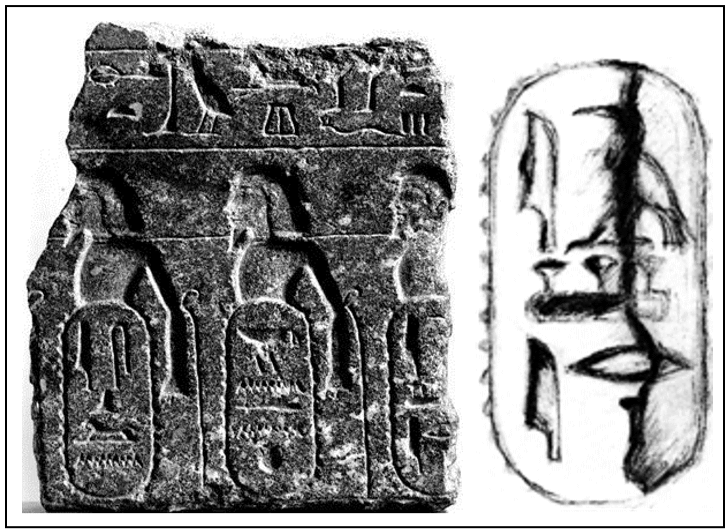
The Berlin Pedestal is an Egyptian inscription housed in the Egyptian Museum in Berlin that almost certainly refers to Israel as a nation in Canaan. The inscription has three name rings, two of which clearly read “Ashkelon” and “Canaan,” and a third that has been reconstructed to read, “Ishrael.”43 In a recent re-examination of the inscription, Peter van der Veen, Christoffer Theis, and Manfred Gorg noted that names Ashkelon and Canaan largely were written consonantally and better reflecting examples from the reigns of Tuthmosis III and Amenhotep II (15th cent. BC), than those from the times of Rameses II and Merenptah (13th cent. BC).44 While the inscription reads “Ishrael” instead of “Israel,” there is no other candidate near Canaan and Ashkelon, other than biblical Israel. It may be that the “sh” spelling is an older way Egyptians spelled Israel, or perhaps borrowed from the cuneiform version.45 If this interpretation is correct, it would indicate that the Israelites had migrated to Canaan sometime in the middle of the second millennium BC,46 exactly at the time the Bible says they did.
Figure 7. Granodiorite head of the 19th Dynasty pharaoh, Amenhotep. 36
Evidence for Amenhotep II as the Pharaoh of the Exodus

Numerous scholars have identified Amenhotep II as the Pharaoh of the Exodus31; he was reigning in 1446 BC when the Israelites left Egypt. Amenhotep II is known to have spent considerable time in the delta region, likely in the 18th-Dynasty palace at Avaris where he would have met with Moses. According to Egyptologist, Charles Aling, “Amenhotep II was born and raised in this area [the Nile delta region], built there, had estates there, and in all probability resided there at times, at least in his early regonal years.”32 Interestingly, (and in keeping with the 10th plague – the death of the first-born), Amenhotep II was not the firstborn son of his predecessor, Thutmose III, nor was his successor, Thutmose IV his firstborn son, as implied by the Dream Stele on the Great Sphinx.33
Another piece of evidence for identifying Amenhotep II as the pharaoh of the Exodus is found by comparing the military campaigns of Amenhotep II and those of his father. While Thutmose III led 17 known military campaigns into the Levant, Amenhotep II led only two or three.34
Thutmose III boasted of having taken 5903 captives on his first campaign, while Amenhotep II claims to have taken 2214 captives on his first. However, Amenhotep II’s final campaign in the ninth year of his reign (ca. 1446 BC) appears to have been a hasty and limited excursion into Palestine to take 101,128 captives. One plausible explanation for this campaign and its dramatic number of captives is that he was seeking to replace a large portion of his slave labor base that had just left Egypt. Moreover, Amenhotep II never took another campaign into Canaan, and the 18th dynasty began to decline in power. 37
In fact, there is strong evidence that the Bible shows the Judges period covered many centuries (not the 150 years allotted by the Ramesses Exodus Theory), that dictates the Exodus be pushed out 2 centuries before a 1207 BC dating of the Conquest. Additionally, The Bible has Moses being born around the time of the building of the city Rameses (Exodus chap. 1), which is the main basis of the Ramesses Exodus Theory. But the conquest happens 120 years later, after Moses’ death. For a 1207 BC Conquest that would mean the city of Ramesses was being built around 1327 BC, 27 years before Ramesses was born in Humphreys’ system. The Bible says in two places that the pharaoh who sought Moses’ life (40 years after Moses’ birth) died before the Exodus (when Moses was 80). Therefore the builder of the store city of Rameses could not possibly also be the pharaoh of the Exodus. 38
Now in Midian the Lord told Moses, “Return to Egypt, for all the men who wanted to kill you are dead.”
– Exodus 4:19 (ESV)
Then there is the archaeological evidence that shows no sign of massive numbers of Semites in Goshen during his reign, no sign of a collapse of Egypt as would be expected at the time of Exodus, and no pattern matching the Conquest of Canaan after his reign. That is why mainstream scholars are so skeptical of the Exodus account. These are just a few of the evidences that show that Ramesses was not the pharaoh of the Exodus and that Merneptah was not the pharaoh at the time of the conquest. When does the conquest account speak of a confrontation with Egypt anyway? For the Humphreys model to be factual, Egypt would have to have defeated Israel at a time when the Bible has the Israelites conquering city after city on their way to controlling most of Canaan. Nothing in this scenario adds up. 39
It is plausible that the Book of Joshua was describing a solar eclipse, but even if one agrees, there is no reason to confine this event to an annular eclipse strictly in 1207 BC. It has been shown that other total or partial eclipses over Canaan in the 1400s BC fit these data just as well, matching the Bible’s own context and timeline much better. Furthermore, evidence of an eclipse in Canaan in 1207 BC (whether or not it is related to the Israelites’ Conquest) gives no reason to connect that event to the reign of Merneptah, who in no other way (except by tradition) is connected to the Exodus or Conquest time period.
As Habakkuk memorably recounts the language of Joshua 10:12-13
Habakkuk 3:8-15
8 Were you angry with the rivers, Lord? Was your wrath against the streams?
Did you rage against the sea when you rode your horses and your chariots to victory?
9 You uncovered your bow, you called for many arrows. You split the earth with rivers;
10 the mountains saw you and writhed. Torrents of water swept by; the deep roared and lifted its waves on high.
11 Sun and moon stood still in the heavens at the glint of your flying arrows,
at the lightning of your flashing spear.
12 In wrath you strode through the earth and in anger you threshed the nations.
13 You came out to deliver your people, to save your anointed one.
You crushed the leader of the land of wickedness, you stripped him from head to foot.
14 With his own spear you pierced his head when his warriors stormed out to scatter us,
gloating as though about to devour the wretched who were in hiding.
15 You trampled the sea with your horses, churning the great waters.
This month’s blog study favors an eclipse interpretation of Joshua 10:10-13, with the best candidate being the Total Solar Eclipse North of Canaan on July 14th, 1405, for the extended celestial sign of Joshua’s Long Day. This shows the lengths the Heavenly Father went to, in answer to Joshua’s prayer when he spoke to the Lord, in the day when the Lord delivered up the Amorites before the children of Israel. Joshua had the great example of Moses to follow, from the Believer’s Hall of Fame in Heb. 11:23-30. As Jon Nessle has encouraged us, we would do well to follow Moses‘ example by working and believing his acts of faith. What will God do for you?!!
If God be for you, who can be against you?
Agape’
Rene’
Footnotes
1. THE EXODUS PROBLEM and its Ramifications p. 113-114, Donovan Courville.
2. IBID, p. 121.
3. IBID, p.
4. IBID, p. 98
5. Astronomy & Geophysics, Volume 58, Issue 5, October 2017, Pages 5.39–5.42, https://doi.org/10.1093/astrogeo/atx178
6. (Notley & Rainey, 2014)
7. Colin Humphreys and Graeme Waddington. ‘Solar eclipse of 1207 BC helps to date pharaohs.’ Astronomy & Geophysics (2017). DOI: 10.1093/astrogeo/atx178.
8. Photo: Todd Bolen, BiblePlaces.com https://www.bibleplaces.com/2014/01/artifact-of-month-merneptah-stela/Patterns of Evidence. [Picture credit]
9. Digging for Truth.
10. Patterns of Evidence
11. Kitchen 2013, Rohl 1995.
12. Colin Humphreys and Graeme Waddington. ‘Solar eclipse of 1207 BC helps to date pharaohs.’ Astronomy & Geophysics (2017). DOI: 10.1093/astrogeo/atx178.
13. IBID
14. https://www.cam.ac.uk/research/news/oldest-recorded-solar-eclipse-helps-date-the-egyptian-pharaohs.
15. IBID
16. Strong’s Concordance [H1820], James Strong.
17. Sawyer (1972), (Walton 1994).
18. https://www.cam.ac.uk/research/news/oldest-recorded-solar-eclipse-helps-date-the-egyptian-pharaohs.
19. IBID
20. IBID, Figure 2. picture credit.
21. https://www.cam.ac.uk/research/news/oldest-recorded-solar-eclipse-helps-date-the-egyptian-pharaohs.
22. IBID
23. IBID
24. IBID, Figure 3. picture credit.
25. IBID, Figure 4. picture credit.
26. https://www.cam.ac.uk/research/news/oldest-recorded-solar-eclipse-helps-date-the-egyptian-pharaohs.
27. IBID,
28. https://www.patternsofevidence.com/2017/11/10/is-this-solar-eclipse-really-joshuas-miracle/
29. IBID, Figure 5 Picture Credit, (courtesy of the NASA website)
30. Strong’s Concordance [H1826], James Strong.
31. Patterns of Evidence: The Exodus
32. IBID, https://www.biblicalarchaeology.org/daily/ancient-cultures/ancient-israel/does-the-merneptah-stele-contain-the-first-mention-of-israel/
33. THE EXODUS PROBLEM and its Ramifications p. 12, Donovan Courville.
34. https://www.biblicalarchaeology.org/daily/ancient-cultures/ancient-israel/does-the-merneptah-stele-contain-the-first-mention-of-israel/
35. Figure 6, picture credit. Journal of Ancient Egyptian Interconnections, 2.4 (2010), 21.
36. Figure 7 picture credit, Photo: Osama Shukir Muhammed Amin FRCP(Glasg) / Wikimedia Commons / CC BY-SA 4.0
37. https://biblearchaeologyreport.com/2021/09/24/top-ten-discoveries-related-to-moses-and-the-exodus/
38. IBID
39. IBID
